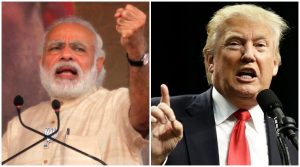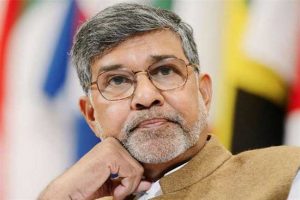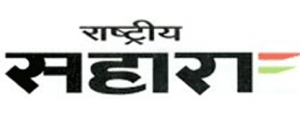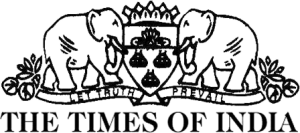
12-06-2017 (Important News Clippings)
To Download Click Here.
Date:12-06-17
किसान के संकट का निदान जरुरी
संजय गुप्त (लेखक दैनिक जागरण समूह के सीईओ व प्रधान सम्पादक हैं।)
मंदसौर में भड़के किसान आंदोलन ने जिस तरह उग्र रूप धारण किया और फिर धीरे-धीरे मध्य प्रदेश के दूसरे हिस्सों में भी फैला उससे देश का ध्यान एक बार फिर किसानों की समस्याओं की ओर गया है। मंदसौर और आसपास के इलाकों में किसानों के द्वारा जो अराजकता और हिंसा की गई उसमें उनका उद्देश्य किसी की जान लेना नहीं था, लेकिन पुलिस अराजक भीड़ को काबू करने में असफल रही और उसे गोली चलानी पड़ी। इस गोलीबारी ने छह लोगों की जान ली और किसानों के गुस्से को और भड़काया भी। भारतीय पुलिस की यह विडंबना है कि वह अराजक भीड़ को बिना किसी नुकसान के नियंत्रित करना नहीं सीख पा रही है। इसमें संसाधन भी आड़े आ रहे हैं और प्रशिक्षण का अभाव भी। मध्य प्रदेश में किसान आंदोलन को लेकर राजनीति शुरू होने में हैरानी नहीं। हैरानी इस पर है कि जो नेता खुद को किसान हितैषी बता रहे हैं वे उनकी समस्याओं का ठोस समाधान खोजने में दिलचस्पी नहीं दिखा रहे हैं। जब-जब किसान अपनी समस्याओं को लेकर धरना-प्रदर्शन अथवा आंदोलन करते हैं तो राजनीतिक और प्रशासनिक व्यवस्था घुटनों पर आ जाती है। किसान उग्र आंदोलन कम ही करते हैं। आमतौर पर उग्रता दिखाने के लिए राजनीतिक दल उन्हें बहकाते हैं, जैसा कि मध्य प्रदेश में देखने को मिला। मंदसौर में किसानों के आंदोलन में हालात जिस तरह बिगड़े उसके लिए कहीं न कहीं शिवराज सिंह सरकार और उनके प्रशासनिक अमले की बहुत बड़ी कमी दिखी।
ऐसा लगता है कि लंबे समय से शासन में रहने के कारण शिवराज सिंह अपने राजनीतिक विरोधियों की चालों के प्रति थोड़े निश्चिंत हो गए थे। शिवराज सिंह के राजनीतिक विरोधी किसानों को उग्र आंदोलन के लिए उकसा रहे थे, लेकिन मध्य प्रदेश के प्रशासनिक अमले को इसकी भनक ही नहीं लगी। शिवराज सिंह खुद किसान पृष्ठभूमि से आते हैं, लेकिन शायद अति आत्मविश्वास के कारण वह यह मानकर चलते रहे कि किसान उनके खिलाफ आंदोलन नहीं करेंगे। मध्य प्रदेश के जिस क्षेत्र के किसानों ने आंदोलन शुरू किया उसके संदर्भ में यह माना जाता है कि वह खेती-किसानी के लिहाज से अच्छा है और वहां के किसान अपेक्षाकृत संपन्न हैं। यह तो एक तथ्य ही है कि शिवराज सिंह सरकार ने किसानों के लिए बहुत काम किया है और इसी के बल पर भाजपा इस राज्य में लगातार जीत रही है। यदि कृषि उपज में अग्रणी रहने के बाद भी मध्य प्रदेश के किसानों ने आंदोलन किया तो इसका मतलब है कि कुछ लोग अपनी राजनीतिक रोटियां सेकने के लिए भोले-भाले किसानों का इस्तेमाल कर रहे थे।
यह ठीक है कि भारत के औसत किसान गरीब हैं और उन्हें बेहतर जीवन जीने का अधिकार है, लेकिन इसका यह मतलब नहीं कि वे कृषि के नाम पर लिया हुआ कर्ज अन्य कामों में खर्च कर दें और फिर उसे माफ करने के लिए सरकारों पर दबाव डालें। पिछले दिनों एक शोध के जरिये यह सच्चाई सामने आई है कि संप्रग सरकार के समय या उसके पहले जो कर्ज माफी दी गई वह अपने उद्देश्य को पूरा नहीं कर सकी। मनमोहन सरकार के वक्त 2008 में चार करोड़ अस्सी लाख किसानों का करीब 70 हजार करोड़ रुपये का कर्ज माफ करते समय हुए यह सोचा गया था कि इससे पैदावार बढ़ेगी और किसानों को जो नुकसान खराब मौसम के कारण हुआ है उसकी भरपाई भी हो सकेगी, लेकिन ऐसा कुछ नहीं हुआ। किसानों ने कर्ज माफी के जरिये मिले लाभ को उत्पादकता बढ़ाने में इस्तेमाल नहीं किया। एक बड़ी गड़बड़ी यह हुई कि जिन किसानों ने अपना कर्ज चुका दिया था उन्होंने खुद को ठगा हुआ महसूस किया। उन्हें यह लगा कि उन्होंने गलती कर दी। किसानों को यह सोचना चाहिए कि बार-बार की कर्ज माफी के बाद भला कौन सा बैंक उन्हें नए सिरे से कर्ज देगा? संप्रग सरकार की कर्ज माफी योजना के बाद जब-तब ऐसी योजना नए सिरे से लाने की मांग उठती ही रहती है। हाल में भाजपा ने जब उत्तर प्रदेश के किसानों के कर्ज माफ करने की घोषणा की तो अन्य राज्यों के किसानों ने ऐसी ही मांग शुरू कर दी। आज मध्य प्रदेश के अलावा महाराष्ट्र, पंजाब, तमिलनाडु आदि राज्यों के किसान कर्ज माफी की मांग कर रहे हैं और उधर उत्तर प्रदेश की योगी सरकार अपने चुनावी वादे को पूरा करने का रास्ता तलाश रही है।
मध्य प्रदेश के किसानों ने यह मांग भी रखी है कि उपज के लिए सरकार की ओर से तय न्यूनतम समर्थन मूल्य में वृद्धि की जाए, क्योंकि उन्हें अपने उत्पादन की पूरी कीमत नहीं मिल पा रही है। किसानों की यह मांग आधारहीन नहीं है। तमाम किसानों को अपनी उपज को औने-पौने दामों पर बेचना पड़ता है, क्योंकि सरकार फिलहाल ऐसे इंतजाम नहीं कर पाई है कि किसानों को अधिक उत्पादन पर अधिक लाभ भी मिल सके। इसके विपरीत अक्सर किसी इलाके में अधिक उत्पादन किसानों के लिए मुसीबत लेकर आता है। यह भी ध्यान रहे कि हर कृषि उपज के लिए न्यूनतम समर्थन मूल्य की व्यवस्था नहीं है। सरकार को यह भी देखना होगा कि किस तरह अन्न, फल अथवा सब्जियों के अधिक उत्पादन की स्थिति में उन्हें जल्दी से जल्दी उन क्षेत्रों में पहुंचाया जा सके जहां इन चीजों की किल्लत हो। इसके लिए कोल्ड स्टोरेज स्थापित करने होंगे ताकि जल्द खराब होने वाली उपज को अधिक समय तक सुरक्षित रखा जा सके। यह काम जैसे बड़े निवेश की मांग करता है उसका फिलहाल अभाव दिख रहा है।
भारत एक कृषि प्रधान देश है, लेकिन जितनी आबादी खेती पर निर्भर है वह जरूरत से ज्यादा है। यह सुनिश्चित करने की जरूरत है कि कृषि पर लोगों की निर्भरता कैसे घटाई जाए। यह काम गैर कृषि क्षेत्र में रोजगार के अवसर बढ़ाकर ही किया जा सकता है। मुश्किल यह है कि कृषि के अलावा रोजगार के अन्य पर्याप्त अवसर बढ़ नहीं पा रहे हैं। इसके कारण ही आज अधिकांश भारतीय अपनी रोजी-रोटी के लिए कृषि पर निर्भर हैं। कृषि क्षेत्र में उत्पादन बढ़ाने के लिए जो अनुसंधान हो रहे हैं उनका असर अभी बहुत धीमा है। यदि किसानों को कर्ज के दुष्चक्र से बाहर निकालना है तो उनकी आमदनी बढ़ाने के नए उपायों पर विचार करना होगा। किसानों को कृषि कार्यों के लिए जो धन चाहिए होता है वह कम ही होता है। उनका अधिकांश खर्च खाद, बीज, कीटनाशक, सिंचाई आदि में होता है। अगर उन्हें ये सुविधाएं सरकार की तरफ से मिलने लगें तो उन्हें बैंकों या साहूकारों से कर्ज लेने की जरूरत ही नहीं रहेगी। इसके साथ ही फसल बीमा योजना का दायरा बढ़ाने की भी जरूरत है। हालांकि मोदी सरकार ने वर्ष 2022 तक किसानों की आय दोगुनी करने का वादा किया है और इस सिलसिले में एक के बाद एक कई कदम भी उठाए हैं, लेकिन अभी उन सबके अनुकूल नतीजे सामने नहीं आ सके हैं। अपने देश में खेती-किसानी दशकों से खराब हालत में है। चूंकि इस हालत को सुधारने में तीन साल के समय को पर्याप्त नहीं कहा जा सकता इसलिए यह आवश्यक है कि किसान अपनी समस्या उजागर करते वक्त धैर्य का परिचय दें।
रोजगार की कमी
संपादकीय
भारतीय उद्योग परिसंघ (सीआईआई) ने गत शुक्रवार को आने वाले वर्षों में देश की रोजगार संबंधी जरूरतों पर आधारित व्यापक अध्ययन पेश किया। अध्ययन में कहा गया है कि रोजगार में कमी का स्तर आम समझ की तुलना में ज्यादा है। हर वर्ष 100-120 लाख युवा देश की श्रम शक्ति का हिस्सा बन रहे हैं लेकिन साथ ही लाखों अन्य युवा कृषि क्षेत्र को तेजी से त्याग रहे हैं क्योंकि वह क्षेत्र अब उनके लिए मुनाफे का नहीं रह गया है। रिपोर्ट में कहा गया है कि हर वर्ष 170 से 200 लाख रोजगार की आवश्यकता है। वर्ष 2012 तक हमारे यहां रोजगार निर्माण जिस गति से हुआ, उसकी तुलना में यह बहुत ज्यादा है। सरकार के अपने आंकड़े बताते हैं कि कपड़ा, चमड़ा, धातु, वाहन, रत्न एवं आभूषण, परिवहन, सूचना प्रौद्योगिकी और हथकरघा आदि क्षेत्र में वर्ष 2015 में केवल 1.35 लाख रोजगार तैयार हुए। जाहिर है सरकार रोजगार के मोर्चे पर मात खा रही है।
Steel Frame Bent to Shape
In a quiet, definitive way, GoI has changed the rules of bureaucratic play
By Pranab Dhal Samanta
The bureaucracy is on tenterhooks these days, abuzz with how uncertain the lives and careers of bureaucrats have become under this government. There is almost no formulaic solution at sight to either appease them or make them feel secure enough in their assignments.
GoI’s latest move to shortlist a bench strength of secretary-equivalent officers, alongside the empanelment of new secretaries, has further unsettled the assured pitch that usually comes with such appointments. Masked behind all this unpredictability is one of the big shifts that has taken place under this government, of which little has been revealed or said. But in a quiet and definitive way, it has changed the rules of bureaucratic play.
At the core of this shift is the 360-degree review or appraisal system to select, promote and even indirectly admonish officials. This essentially reduces the reliance on annual confidential reports as the key basis for shortlisting and empanelment.
This, in turn, has a significant bearing on the final selection of a bureaucrat to a top job.

This is not to say that any of these methods have turned obsolete. But their effectiveness, or ‘rate of return’, has sharply dropped. While some of it has to do with the erosion of coalition era multiple power centres, the simple fact is that new rules have replaced old rules.
360-Degree System
It’s said that so devoted is the prime minister to the 360-degree system that he doesn’t even grant himself to be exempted. He has reportedly chosen to drop names forwarded from his office if they don’t pass the 360-degree test.
Three questions arise: What is this review? How is it done? And why is it so important to GoI?
Let’s start with the last question first. A way had to be found to counter a decade of Congress rule in which the bureaucracy held sway, allowing for long-lasting loyalties to be cultivated across services and beyond retirement barriers. For new equations to be built, old ones had to be disrupted.
But how? After all, lines and rows of batches-cum-cadres seemed well sorted with a string of ‘outstanding’ reports and recommendations. There was no way that they would fail the existing evaluation and selection system, unless there was outright political high-handedness, which would have invited avoidable bureaucratic opprobrium.
Then there was the mandate against corruption. This provided the perfect setting for a systemic overhaul by a newly elected political leadership. This is also the reason why GoI could carry out more senior bureaucratic reshuffles than usual in the past three years.
It was in this context that the 360-degree system was put in place. What does it mean? Quite literally, like in many corporates, it amounts to conducting a holistic evaluation across talent, skills, social and personal parameters instead of simply looking at filework.
In bureaucracy, this meant don’t go by confidential reports alone. GoI’s highest echelons were convinced that this system had been rigged, and that many officers were not making it to the shortlist because they had one ‘outstanding’ less than the other.
Few important calls were made. One, all eligible candidates, regardless of their average performance on their appraisals, will be considered for this assessment. Two, the minister’s recommendation of the post being filled will not override the outcome of the 360-degree process. And three, integrity will also be assessed by way of reputation, not just by a Central Vigilance Commission (CVC) clearance.
A Tightly Held Secret
So how is the process conducted? The exercise is a tightly held secret conducted by three retired secretary-level officials. They have been appointed for a two-year period, subject to health considerations, and their identities are supposed to be classified.
This group is expected to work pretty much independently, collecting information from myriad sources in an unsuspecting, unassuming manner, figuring out the general reputation of the officer among subordinate staff, paint an overall perception picture on integrity, besides making any other relevant observations. It’s quite possible that this group wouldn’t be made aware of the job an officer is being considered for.
Now, whom they talk to, and whose views count is still more or less a grey area. But what we know is that this report is placed before a panel headed by the Cabinet secretary in case of secretary-level appointments, and the establishment officer, who heads the panel for joint secretaries. Both panels have PMO representations.
All other inputs, including intelligence reports and ministerial recommendations, are on the table. But the contents and conclusion of this report have a definitive bearing. The recommendation of this panel is largely final.
In other words, the measure of perception and reputation has come to matter more, regardless of what appraisal reports say. And while that may give a second chance to many who have lost out in their careers for the wrong reasons, the system has also introduced new variables, including subjective elements, that have drastically altered the field of play.
Date:11-06-17
विश्व मंच पर नया बाहुबली
डॉ. दिलीप चौबे
भारत की पूर्ण सदस्यता के बाद रूस और चीन की अगुवाई वाला शंघाईसहयोग संगठन (एससीओ) विश्व मंच पर एक शक्तिशाली रक्षा और राजनीतिक मंच के रूप में उभरा है। करीब 16 साल पहले रूस और चीन की पहल पर यह संगठन अस्तित्व में आया था। इसके प्रादुर्भाव की नियंतण्र राजनीतिक पृष्ठभूमि में ही संगठन के महत्त्व को समझा जा सकता है। नौंवें दशक में सोवियत संघके विघटन के बाद शीत युद्ध समाप्त हो गया था, और इसका नियंतण्र राजनीतिक संरचना और प्रक्रिया, दोनों पर व्यापक रूप से प्रभाव पड़ा। सोवियत रूस-अमेरिका की प्रतिद्वंद्विता और द्वि-ध्रुवीयता पर आधारित विश्व व्यवस्था एकध्रुवीय में तब्दील हो गई।
अमेरिका एकमात्र महाशक्ति के रूप में उभरा। तब अनुमान लगाया जा रहा था कि पश्चिमी देशों के सैन्य संगठन नाटो की भूमिका कमतर होती जाएगी। लेकिन ऐसा नहीं हुआ और पश्चिमी देशों की शक्ति-राजनीति पहले की तरह ही जारी रही। यह स्थिति बचे-खुचे रूस के अस्तित्व के लिए संकट पैदा कर रही थी। दूसरी ओर, चीन की शक्ति भी बढ़ रही थी। इन दोनों देशों की चिंता इस बात को लेकर थी कि नये शक्ति समीकरण का मुकाबला कैसे किया जाए? अपने राष्ट्रीय और क्षेत्रीय हितों की रक्षा कैसे की जाए?
इन दोनों देशों की मिली-जुली चिंताओं से शंघाईसहयोग संगठन का अस्तित्व सामने आया। इसको लेकर तरह-तरह की आशंकाएं उठ रही थीं कि क्या पश्चिमी देशों के खिलाफ यह एक राजनीतिक-आर्थिक या सैनिक संगठन है? इन्हीं आशंकाओं के मद्देनजर भारत ने इस संगठन के प्रति कोईउत्साह नहीं दिखाया और इसका सदस्य नहीं बना। लेकिन जैसे-जैसे दक्षिण एशिया और विश्व राजनीति में भारत की शक्ति बढ़ती गई रूस की ओर से भारत पर इसका सदस्य बनने के लिए दबाव बढ़ने लगा। भारत भी 2005 में इसकी बैठक में पर्यवेक्षक सदस्य के रूप में शामिल हुआ। अब भारत के पक्ष में रूस ने और पाकिस्तान के पक्ष में चीन की ओर से की गईपहल के बाद दोनों देश पूर्णकालिक सदस्य बन गए हैं। इस संगठन के जरिए क्षेत्रीय तथा नियंतण्र परिप्रेक्ष्य में शांति और सुरक्षा के नये दरवाजे खुलते हैं। यह संगठन विश्व की 42 फीसद आबादी और नियंतण्र जीडीपी के करीब 20 फीसद हिस्से और 22 फीसद भूभाग का प्रतिनिधित्व करेगा।
इस तरह यह विश्व का सबसे शक्तिशाली और बड़ा संगठन बनने की क्षमता रखता है।भारत और पाकिस्तान, के इस संगठन का सदस्य बनने से मध्य एशिया में व्यापार और निवेश की संभावनाएं बढ़ गईहैं। यह चीन की ‘‘वन बेल्ट, वन रोड’ और ‘‘रेशम मार्ग’के जरिए ही मुमकिन हो सकता है। लेकिन चीन की ‘‘ओबोर’ परियोजना को लेकर भारत का विरोध है। इस परियोजना से भारत की संप्रभुता और अखंडता को धक्का लगता है। इसीलिए प्रधानमंत्री नरेन्द्र मोदी ने बैठक में साफ कहा, ‘‘हम संपर्क बढ़ाने के पक्ष में हैं, लेकिन सभी देशों की संप्रभुता और क्षेत्रीय का सम्मान होना चाहिए।’ उन्होंने आतंकवाद का मुद्दा भी उठाया और इसको मध्य एशिया का सबसे बड़ा खतरा बताया। शंघाई संगठन ने भी आतंकवाद से लड़ने का जो संकल्प लिया उससे भारत को मदद मिलेगी। इससे कश्मीर और अफगानिस्तान में शांति और स्थायित्व कायम होने की उम्मीद जगी है।
अमेरिका की चूक, हमारे लिए मौका
उपेन्द्र राय (लेखक ‘‘तहलका’ के सीईओ व एडिटर इन चीफ हैं)

राष्ट्रवाद अंतरराष्ट्रीय प्रतिबद्धता का दुश्मन हो, इस पर विास करना आसान नहीं। आसान इसलिए भी नहीं है क्योंकि यह मान लेना कि अमेरिका के पूर्व राष्ट्रपति बराक ओबामा का राष्ट्रवाद अंतरराष्ट्रीय प्रतिबद्धता से कमतर था, इसे भी स्वीकार नहीं किया जा सकता। बहरहाल, दोनों में कोई एक सही और एक गलत या समय के हिसाब से दोनों सही या दोनों गलत हो सकते हैं। इतना तय है कि ओबामा के फैसले को अमेरिका और अमेरिकियों के विरोध में बताते हुए ही डोनाल्ड ट्रंप ने पेरिस जलवायु समझौते से हटने का ट्रंप कार्ड खेला है।पेरिस की भूमिका अचानक महत्त्वपूर्ण हो गयी। फ्रांस के युवा राष्ट्रपति इमैनुएल मैक्रों ने भारतीय प्रधानमंत्री नरेन्द्र मोदी का जिस गर्मजोशी से स्वागत किया, उस पर दुनिया की नजरें टिकी हैं।
दरअसल, अमेरिका-इंग्लैंड से दूर होते यूरोपीय यूनियन को मजबूत नेतृत्व की तलाश है। अगर नेतृत्व शब्द को हटा भी लिया जाए क्योंकि नस्लवाद आज भी जिन्दा है और गोरे देश किसी काले देश का नेतृत्व शायद ही स्वीकार करें-तो उभरते भारत के रूप में मजबूत साथी की यूरोपीय यूनियन को जरूरत है। यह बात प्रधानमंत्री नरेन्द्र मोदी भी बखूबी समझते हैं। इसलिए उन्होंने जर्मनी की चांसलर एंजिला मर्केल से यह बात साफ करने में देरी नहीं लगायी कि जर्मनी के नेतृत्व में ही यूरोपीय यूनियन मजबूत होकर उभर सकता है। पीएम मोदी ने मजबूत यूरोपीय यूनियन को दुनिया और भारत के लिए आवश्यक बताया। फ्रांस और जर्मनी अलग-अलग देश के रूप में भी भारत के लिए कारोबारी नजरिये से महत्त्वपूर्ण हैं। दोनों देश भारत का स्वागत कर रहे हैं तो यह अनुकूल स्थिति है और यूरोपीय यूनियन के अहम देश के तौर पर भारत का स्वागत कर रहे हैं तो यह और भी महत्त्वपूर्ण हो जाता है। महत्त्वपूर्ण इसलिए भी कि यूरोपीय यूनियन ने साम्यवादी चीन और भारत में भारत को ही पसंद किया है।भारत का राष्ट्रवाद अमेरिका और इंग्लैंड के रु ख से अलग अंतरराष्ट्रीय प्रतिबद्धता से ओत-प्रोत है। यही वजह है कि भारत ने हर हाल में पेरिस जलवायु समझौते की हिफाजत का वचन दोहराया है। धरती के तापमान को दो डिग्री से कम कर डेढ़ डिग्री तक लाना, कार्बन उत्सर्जन के स्तर को कम करना और इन सबके लिए आर्थिक जरूरतों को पूरा करने की जो योजना 23 साल की मेहनत के बाद परवान चढ़ने को थी, उसे जोरदार झटका लगा है। लेकिन यह दुनिया के लिए एक अवसर लेकर भी आया है कि नेतृत्व का जो मौका अमेरिका ने गंवाया है, उसे उसका अहसास कराया जाए।शायद ट्रंप इस बात को भूल रहे हैं कि जो देश सोच में पिछड़ जाता है वास्तव में पिछड़ता वही है। ट्रंप ने अंतरराष्ट्रीय प्रतिबद्धता से पीछे हटते हुए हासिल तो कुछ भी नहीं किया है।
जिस नुकसान की आशंका उन्होंने देखी है, वह अभी हुई नहीं है। पर, जो नुकसान अमेरिका को हो चुका है, वह है विश्व क्षितिज पर अमेरिकी नेतृत्व पर कमजोर होता विास। दुनिया के इतिहास में कभी कोई ऐसा मौका नहीं आया, जब किसी अमेरिकी फैसले का इतना व्यापक विरोध हुआ हो। सच यह है कि कोई एक देश भी, यहां तक कि इंग्लैंड भी अमेरिका के फैसले का स्वागत करता नहीं दिखा।पेरिस जलवायु समझौते से हटने की वजह के तौर पर अमेरिकी राष्ट्रपति डोनाल्ड ट्रंप ने भारत का जिस तरीके से नाम लिया, उस पर भारत ने तयात्मक दावों को गलत बताते हुए नाराजगी का इजहार करने में देर नहीं की। हालांकि औपचारिक भाषा नाराजगी की नहीं रही। पर, फ्रांस की सरजमीं से नरेन्द्र मोदी ने पेरिस जलवायु समझौते से बने रहने और नियंतण्र जिम्मेदारी को पूरा करने का संकल्प जताकर अमेरिका से बिल्कुल अलग रु ख दिखाने से परहेज नहीं किया। भारत को मिली शंघाई कारपोरेशन की सदस्यता का जिक्र इस मौके पर इसलिए जरूरी है क्योंकि यह विश्व के हर कोने में भारत की स्वीकार्यता को दर्शता है। चीन के प्रभुत्व वाली इस संस्था में भारत की सदस्यता नरेन्द्र मोदी के नेतृत्व में भारत की बड़ी सफलता है और पिछले कुछ अरसे से भारत की जो अहमियत बढ़ी है, उसी का नतीजा है कि यूरोपीय यूनियन भी भारत का पलक पावड़े बिछा कर स्वागत करने को तैयार दिख रहा है।भारतीय पीएम नरेन्द्र मोदी और अमेरिकी राष्ट्रपति इसी महीने मिल सकते हैं, जिसकी आधिकारिक घोषणा अभी नहीं हुई है। यह मुलाकात कोई उम्मीद तो नहीं जगाती, लेकिन इसमें कौतूहल का तत्व बहुत ज्यादा है।
चमत्कार की भी उम्मीद की जा सकती है। इसलिए उम्मीद की जा रही है कि शायद मोदी-ट्रंप मुलाकात ही कोई गुल खिला दे। अमेरिका को एशिया में जापान के अलावा कोई देश विश्वस्त दिखता रहा है तो वह भारत है। पाकिस्तान अमेरिका से दूर छिटक रहा है और चीन के करीब जा रहा है। फिर दुनिया में उभरती ताकत है भारत, जिसकी स्वीकार्यता दुनिया में है और इसलिए अमेरिका न तो भारत को नाराज करना चाहेगा और न ही रिश्ते को खराब। परस्पर कारोबारी संबंध के ख्याल से भी भारत-अमेरिका के बीच रिश्ते का भविष्य उज्ज्वल है। फिर भी, दो राष्ट्रवादी नेता परस्पर सहयोग का कोई फॉर्मूला निकाल पाते हैं या नहीं, इस लिहाज से इस मुलाकात को सीढ़ी के तौर पर देखा जा रहा है। पेरिस जलवायु समझौते से हटकर अमेरिका ने दुनिया की राजनीतिक लामबंदी को नये सिरे से एकजुट होने का अवसर दिया है। जाहिर है कि कूटनीतिक हलचल शबाब पर है।
Date:12-06-17
PAN victory: But steps are needed to protect privacy and against indiscriminate use of Aadhaar number
TOI Editorials
The verdict of the Supreme Court bench, upholding the validity of the provision in the Income Tax Act which makes Aadhaar number mandatory for securing issue of permanent account number (PAN) and filing income tax returns, is welcome. Linking of Aadhaar with PAN may be necessary to prevent individuals from holding multiple PAN cards. At the same time, the court has provided relief for those experiencing difficulty in such linking through no fault of their own by allowing them to continue filing income tax returns without Aadhaar numbers. The court has also asked the government to take steps to prevent leakages of biometric data of citizens, which has become a serious concern.
The government certainly has a case for linking Aadhaar numbers to PAN cards. The number of PAN cards issued was as much as 250 million whereas the number of income tax returns filed was only about 36.5 million. Clearly there are a lot of income tax payers with more than one PAN card, which help them evade taxes. It is a mistake on the part of the government, however, to introduce Aadhaar – whose original intention was to ensure welfare benefits go to the right people – indiscriminately across the board.
There is a plan, for example, to make Aadhaar numbers mandatory for booking air tickets, which is draconian. Government may want to track finances of citizens for legitimate reasons, but why does it want to track all their movements? India needs, in fact, comprehensive legislation that would protect the right to privacy of every individual and ensure prompt and effective remedial measures in case of transgressions. Such legislation would also help the government to secure a positive ruling from the constitutional bench in the Aadhaar case.
Take the plunge: Entry to SCO opens up opportunities for India to look North
TOI Editorials
With India obtaining membership of the Shanghai Cooperation Organisation (SCO), an important platform has opened up for New Delhi in an increasingly multipolar world. As a Eurasian political, economic and security organisation, SCO serves as a critical geopolitical pole focussed on central Asia and its neighbourhood. For India, SCO membership provides opportunities in three key areas. First, given that Pakistan too has been admitted as an SCO member, New Delhi could use the organisation to hold Islamabad accountable on the issue of terrorism. In fact, combating terrorism, extremism and separatism is a principal priority for SCO. And there’s no denying that terrorism emanating from Pakistan poses the biggest threat to regional security today. The abduction and murder of two Chinese teachers in Balochistan demonstrates that the terror weapon cannot be finely honed for use against India alone. Pakistan and its patron China too will suffer; terrorism is not so much a zero- as a negative-sum game.
Both India and Pakistan will now be expected to conduct joint military exercises along with other SCO members under the Tashkent-based Regional Anti-Terrorism Structure. Such coordination between Indian and Pakistani militaries is welcome as it can open a direct channel of communication between New Delhi and Rawalpindi GHQ – the real author of Pakistan’s India policy. A future India-Pakistan compact is only possible if the Pakistani military is on board.
The second area of interest is India-China relations. Prime Minister Narendra Modi met President Xi Jinping on the sidelines of the SCO summit in Astana, and emphasised the need to respect each other’s core concerns. This comes at a time when ties between India and China have become tense over Beijing blocking New Delhi’s membership to the Nuclear Suppliers Group and stonewalling UN sanctions against Pakistan-based terrorist Masood Azhar. With China using SCO to further its strategic interests in the region, India could leverage this to obtain Beijing’s cooperation on Pakistan-sponsored terrorism.
Since Pakistan blocks India’s connectivity with Afghanistan and central Asia, Beijing could help New Delhi on this score as well. In exchange for this as well as settling border disputes with India, China could obtain India’s support for its ‘One Belt One Road’ project of transnational connectivity. Lastly, SCO provides a good platform to boost India’s ties with energy-rich central Asian nations. New Delhi should capitalise on this to shore up its energy security and open up land trading routes to Russia and Europe.
‘Assam’s vision is to be gateway to Southeast Asia … open trade routes connecting Myanmar, Bangladesh, Bhutan, China’
The Interviews Blog
Assam Chief Minister Sarbananda Sonowal recently completed his first year as the first BJP chief minister of the state. He spoke to Pratigyan Das about the strategic significance of the newly inaugurated Dhola-Sadiya bridge, his government’s eviction drive against encroachers on religious and ecological lands and building greater connectivity with Southeast Asia.
What is your response to China asking India to be “cautious” and to exercise “restraint” after the recent inauguration of India’s longest bridge over the Brahmaputra that has drastically reduced the distance and travel time between Assam and Arunachal Pradesh?
The 9.15 km Dhola-Sadiya bridge will put the development of the northeastern part of the country on a higher growth trajectory. The bridge will ensure seamless transportation between Assam and Arunachal Pradesh and bring people of both the states emotionally, culturally and geographically closer.
The bridge is also a way of exploiting and promoting the mystic, snow-clad beauties of Roing and Mayodia, the two tourist attractions in Arunachal Pradesh.
What is your government’s take on the environment ministry’s recent notification that effectively bans sale of cattle for slaughter?
The state government is examining all the provisions of the new law exhaustively.
You have publicly defended Major Nitin Leetul Gogoi over the human shield controversy in Kashmir. Why?
Major Nitin Leetul Gogoi who hails from Assam’s fertiliser town Namrup has been rendering his duties in Kashmir as an Indian army officer. His action of tying a man to a jeep as a shield against stone-pelters led to the timely rescue of several polling officials and others. We hail Major Gogoi’s timely action and his astute fight against militancy which is a threat to the lives of the common men of our country.
What is your government’s view on the proposed citizenship amendment bill? How is the state addressing the refugee and infiltration issue?
Implementing the Assam Accord in its letter and spirit is a commitment of our government. We are according top priority to providing constitutional, legislative, social, cultural and economic safeguards as per Clause 6 of Assam Accord to the indigenous people of Assam.
We are also committed to protecting the Xatra (Vaishnavite monastries) lands and other religious, cultural and ecological lands from infiltrators. After coming to power our government initiated action against illegal encroachment, subsequently huge chunks of land have been freed from the illegal encroachers. On the citizenship issue, we will be guided by our party’s Vision Document.
What do you think are the three major achievements of your government in your first year?
Our government has been working resolutely to wipe out corruption. We have adopted zero-tolerance against corruption and we have already nailed several corruption schemes and corrupt officials, arrested them. Due investigation is going on against them.
We have also achieved remarkable success in recovering a huge chunk of land from encroachers. A series of eviction drives were carried out to free the land. For instance, in Kaziranga National Park illegal settlers were evicted from the forest land. Moreover, our government has been working resolutely to maintain and strengthen the age-old bonhomie among people belonging to different caste, creed, ethnicities and religious background.
What is your government doing to attract investment?
Our long-term strategy is to develop conducive infrastructure, including air connectivity to Asean countries, access to sea ports through Brahmaputra and opening of international trade routes connecting Myanmar, Bangladesh, Bhutan, China and other countries.
We plan to connect the state through a trans-Asian highway and trans-Asian railway network. We are also preparing to build an industrial corridor in Assam and create a high-tech industrial city with plug-and-play facilities for setting up new industries. This will be all world class infrastructure. So far as medium- and short-term strategy is concerned, we will improve the existing infrastructure, simplify the procedures, amend rules and laws to build business and create an enabling environment of ease-of-doing business in the state.
We also plan to hold a Global Investment Summit in November this year to start an industrial revolution in the state.
What are the major challenges in your roadmap for the next four years?
Assam is continually developing much-needed infrastructure towards its vision of being a gateway to Southeast Asia.
Brahmaputra express highway would be soon built on both sides of the river. The government has also undertaken a project for dredging the entire stretch of the river Brahmaputra from Sadiya to Bay of Bengal. This ambitious project will allow big ships to navigate and will open sea route access for Assam. This initiative to develop waterways up to Chittagong Port, Bangladesh, will boost industries and commerce in Assam.
Children need global help: Child labour numbers are no longer dropping, they may be climbing back up
Kailash Satyarthi (The writer is 2014 Nobel Prize Laureate and founder of Kailash Satyarthi Children’s Foundation)

When it culminated in Geneva, even we were pleasantly surprised by the reaction of the almost 2,000 delegates, including labour ministers from 150 countries, who had gathered there for the annual meeting of the International Labour Organization. Not only did 600 odd children and activists who had marched across the world get a standing ovation, but ILO actually agreed to pass an international legislation on the worst forms of child labour.
Popularly known as ILO Convention 182 that effectively prohibited child labour, abuse and exploitation, it was unanimously adopted in 1999. At one stroke, the global community made a sincere and honest attempt to stop an abomination that haunted and still troubles the conscience of the world: the pernicious and unacceptable violation of child rights.
By then, we had spent 18 struggling but satisfying years fighting against child labour through our organisation, Bachpan Bachao Andolan, which was launched in 1980. The quick ILO decision to declare exploitative child labour as illegal made our struggle worth it. Subsequently, the decision in 2002 to mark June 12 every year as World Day Against Child Labour ensures that the global community remains engaged and focussed on abolishing child labour.
Indeed the global community needs to retain unwavering focus. By 1990, the United Nations had announced that all children would get an education by the year 2000. But nothing of that sort was happening at the ground level. By 1996, it was estimated that about 250 million children were being exploited through child labour, millions of them as virtual slaves or bonded labour.
Freedom, education and basic rights were a distant dream for these 250 million children. However, much to our satisfaction, the situation started improving at the ground level. There was a significant drop in the prevalence of child labour for a decade or so. But much to our dismay, that is no longer true.
The last four years have actually seen a stagnation, if not an increase in the prevalence of child labour. This time last year, the UN officially reported that 168 million children across the world were still being ruthlessly exploited despite stringent laws against child labour.
To this dangerous ground level situation has been added the alarming increase in recent years of child refugees and trafficking. Children constitute one third of the total population of the world but account for more than 50% of refugees. In the last decade, close to 10 million children have been killed in conflict and more than six million have become physically disabled.
It is estimated that 28 million children have become refugees without any hope for a future. Syria and Afghanistan alone accounted for more than 50% of child casualties and refugees in 2015. While accurate and reliable numbers are not available, there is a consensus that the refugee crisis has led to a big jump in child trafficking.
Clearly, the global community needs to engage and focus all over again with a sense of urgency on the menace of child labour and trafficking. The menace must be tackled in a multi-dimensional manner.
We need to partner more effectively with spiritual leaders to raise awareness. No religion sanctions the exploitation of children; rather, all of them consider protection of children as a sacred duty. Apart from religion, we need to address this issue at a cultural level too. In virtually every society ranging from the so-called primitive to the most advanced, children are treasured and celebrated. We need to channelise these cultural legacies into a sustained movement, both at the local community level as well as global level.
Religion and culture give us the moral foundation to build a better world for our children. Economics will provide the means and resources to do the same. It has been established that acute lack of livelihood opportunities often leads to child labour. Targeted welfare schemes like MGNREGA and midday meal scheme have not only led to a dramatic rise in enrolment of children in schools, but also a drop in child labour.
But this economic struggle is going to be long and arduous. Even today, it has been estimated that more than 600 million children suffer from extreme poverty. Our moral challenge is to ensure that the next generation doesn’t suffer the same fate.
I remain optimistic. March 1998 saw tens of thousands of ordinary citizens in cities like Dhaka, Oslo, Sao Paulo, Paris, Bangkok, Capetown and Kabul among others actively participate and demand abolition of child labour. One of the most evocative slogans then was: From Exploitation to Education. The time has come to launch yet another major global effort.
What moral argument against abolition of child labour can the world have when 210 million adults are jobless or unemployed who are mostly the parents of 168 million child labourers? It is also a proven fact that education is the most effective enabler, equaliser and empowering force that we know of, and child labour is the biggest impediment to education.





